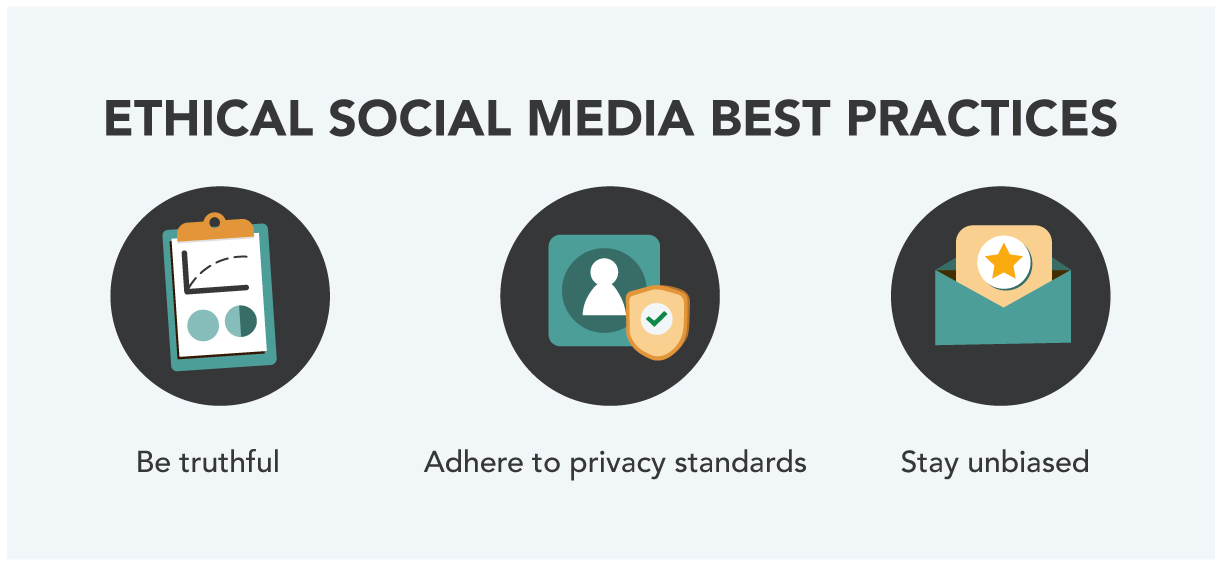Over 91% of brands with over 100 employees use social media marketing. That number would feel staggering if we didn’t also know that about 67% of all Americans use social media. Four of the five most popular social media platforms are owned by Facebook: Facebook, WhatsApp, Facebook Messenger, and Instagram. YouTube is the outlier.
When the Facebook Boycott occurred in July of 2020 there was national attention. The longstanding impact of that move was largely PR, not measurable policy reform. Since the boycott, most brands are back on Facebook’s advertising platform even with the targeting changes caused by iOS 14.5. The truth is, it’s not easy for brands to step away from the tech giant. 41% of small businesses rely on social media to grow their business, and 77.6% of small businesses use it. So, if you’re a brand that uses Facebook (or any other social media network), how do you do so ethically? We’re breaking down our methods and ideas below.
 A Brief History of Social Media Marketing
A Brief History of Social Media Marketing
It’s arguable that the first social media platform was Six Degrees, launched in 1997. In 2004 Facebook launched, though it wouldn’t be available to the public until 2006. Today, one in thirteen people in the world is on Facebook. Half of them are logged on every day. YouTube, Twitter, and LinkedIn were also in this time range, launched in 2005, 2006, and 2003 respectively. Honorable mention goes to MySpace—launched in 2003—which outpaced Google in traffic in 2006. You go, Tom. Even with relative newcomers like TikTok, Snapchat, and Pinterest, the landscape has been growing for nearly 25 years.
Since the 90s, social media has become a multi-billion dollar industry. If you search Social Media Manager in People on LinkedIn, there are 11.3 million hits. However, the rose-colored glasses on the profession have started to come off. When Amy Brown of Wendy’s Twitter fame broke the silence, her words resonated. She shared this, “I don’t see a future in this career path anymore until there are some serious changes.”
For individuals, professionals, and brands, social media has gone from fun, connection, and capital to an ethical minefield. So, what are companies to do?
Harm-Reduction on Social Media
For some, harm reduction is the best future they can imagine at the moment. Relying on Facebook advertising isn’t uncommon, and finding ways to counteract the damage may be the first step. Is there a portion of profits that can be donated to media literacy organizations? Can your business be a voice of reason amongst misinformation? What is your place? Asking these questions is a challenge, but it’s one we must begin with if we want to build a better internet. Sharing about resources like Crash Course’s Media Literacy hub, or Poynter’s MediaWise may be a way to get your audience involved.
Alternative Platforms
Mad Fish considers and leverages alternative platforms as a method of diversifying when we can. It is important when doing so to be clear on the goals and expectations of these marketing campaigns. Impressions, targeting and audience interaction vary widely from platform to platform. While there are social media platforms that have fewer problems with white supremacists or misinformation, the truth of the matter is that no channel is monitored enough for accuracy. No matter what channel you use, focus on putting out the content that reflects your brand. To supplement, we suggest supporting organizations that disrupt the systems that make platforms like Facebook socially problematic.
Ethical Social Media Best Practices
Here are a few things to keep in mind to use social media in the most ethical way possible for your audience.
- Be truthful. Maybe this feels too back to basics, but overpromising or making misleading claims is never okay. Back things up with data and share real and exact information.
- Adhere to privacy standards. Keep your customer’s data private and don’t engage in murky audience research methods (in fact, check out our post on how to do ethical audience research)
- Stay unbiased. While clickbait or certain tactics may earn you more engagement or followers in the short term, being a reliable source of information will keep your audience loyal.
Diversifying Your Digital Presence
For some brands, their ethics guide them to leaving social media as a platform for sales and connection. Building owned communities and networks is something we recommend regardless, and this can be a great way to diversify your channels and have a more personal relationship with your audience. Email marketing delivers great ROI, roughly $44 for every $1 spent. In addition, it’s a way to stay connected with your audience on their time. Expanding outside of channels owned by others is a great way to deliver the experience you want to, with the folks who are the most committed to the work you’re doing.
Learn more about Mad Fish, and how we can help you build a more ethical digital marketing stack here.

